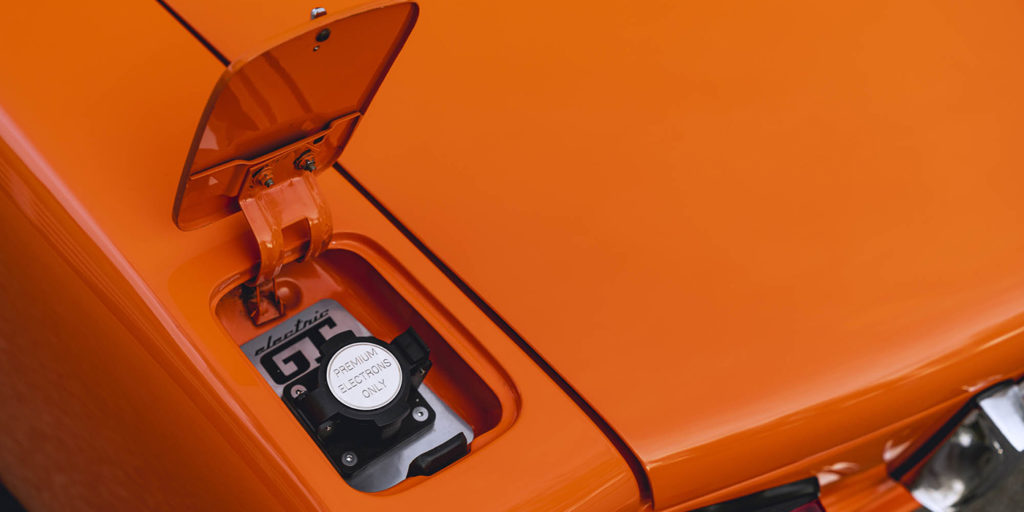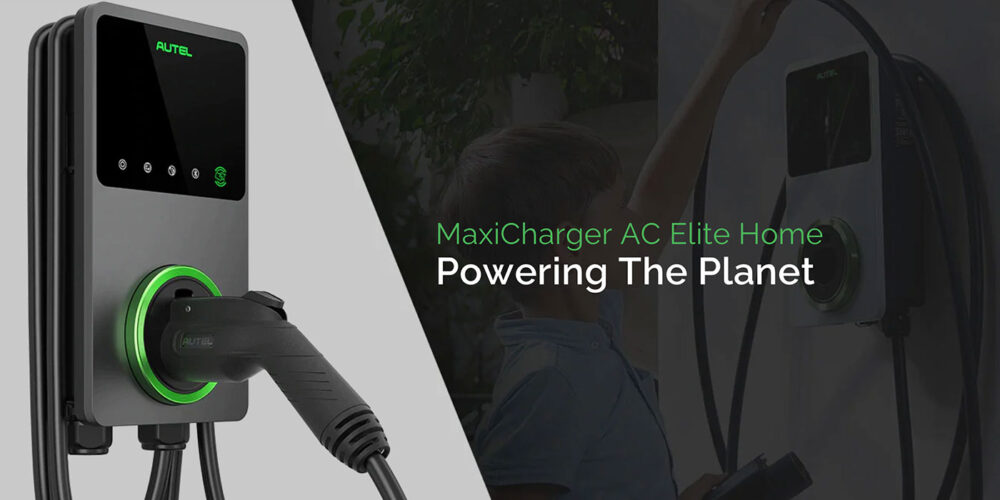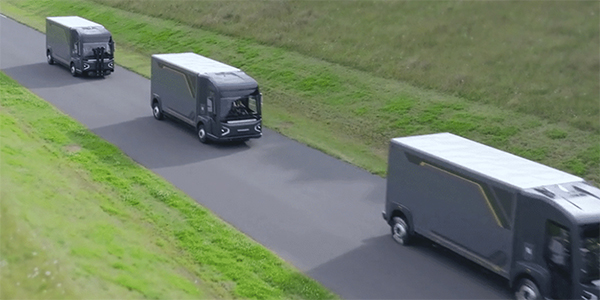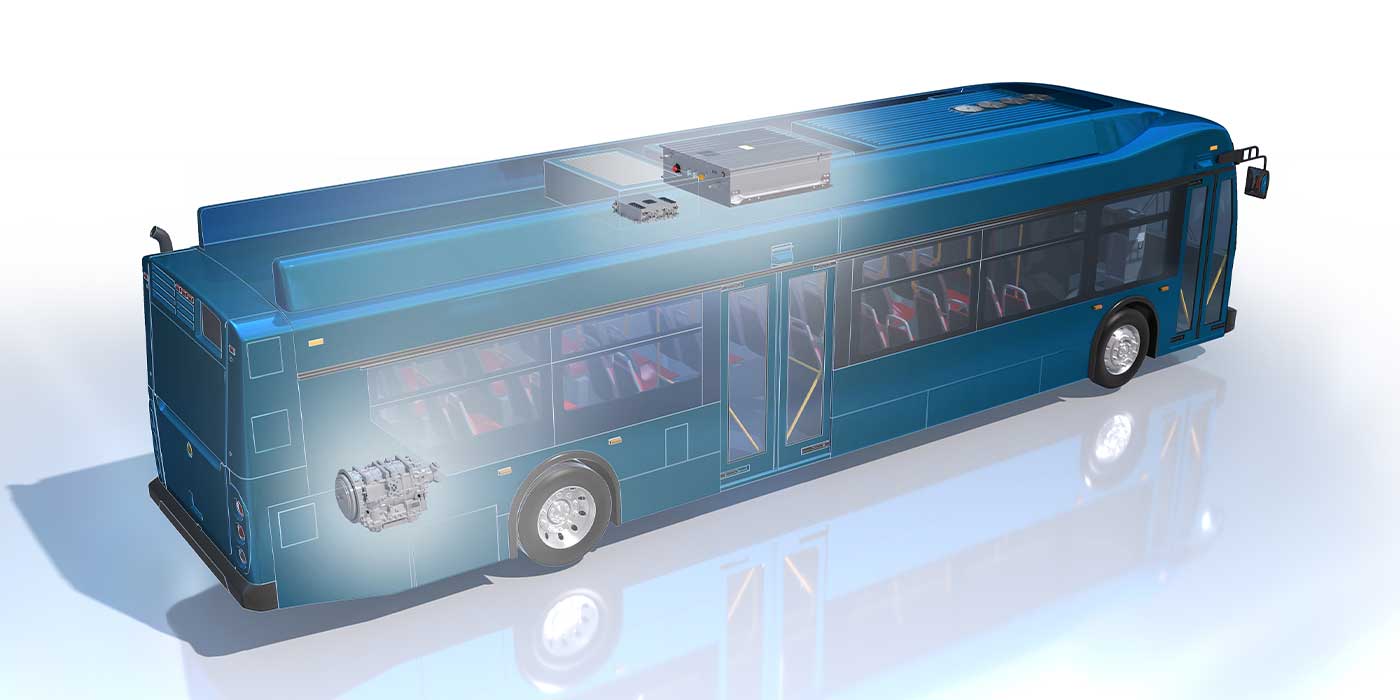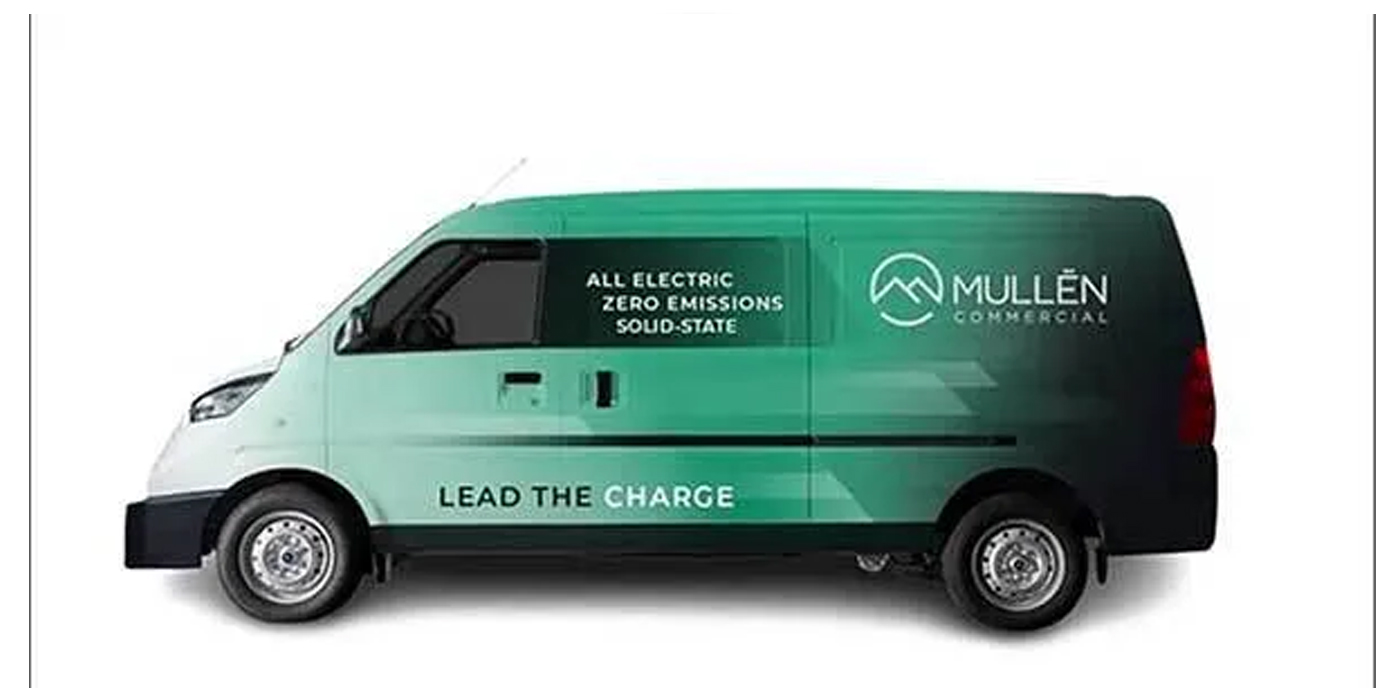Electric cars are nothing new. They’ve been around for more than 100 years, but the internal combustion engine won the race for mass consumption because of Henry Ford and the Model T. However, EVs are coming back into fashion. Folks like Elon Musk of Tesla are betting big on EVs, and so are the major car manufacturers like VW, Volvo, GM and Ford.
When we spoke to Eric Hutchinson of Electric GT last month, the company’s base in California was surrounded by wildfires, which many are saying are primarily due to climate change.
“In the midst of the wheels coming off the bus, we’re trying to put them back on the bus and have more fun driving,” Hutchinson says.
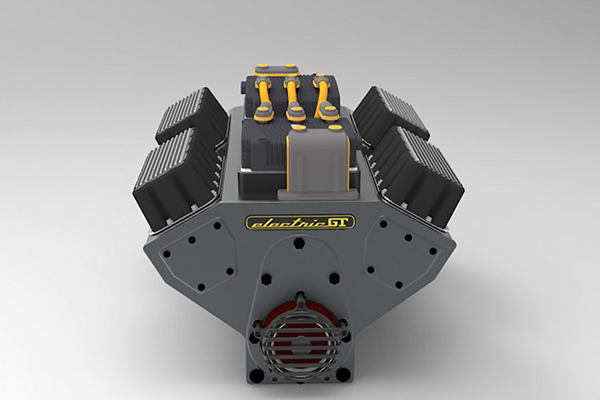
Climate change is on many people’s minds, especially out west, because they see the forces of nature playing out right now. California is even trying to pass legislation that would ban the internal combustion engine (ICE) by 2035. The law would not affect the current fleet of ICE vehicles, but new sales would be prohibited. California has always been ahead of the curve when it comes to climate change and emissions regulation.
If the ICE were effectively banned in the next 15 years from the most populated state in the nation, where would that leave engine builders? In the electric vehicle (EV) world, they are called motors, not engines, and they are not something that can be rebuilt (at least not yet). But there is one area where interested builders/installers may find a niche that would also complement their current focus on internal combustion engines – electric conversions for classic cars.about:blank
Hutchinson says the EV conversion market is very segmented. There are mostly mom and pop shops, and a few companies experimenting with conversions. The profile of EVs has been raised because many celebrities and media moguls are buying them, but not many have done any EV conversions. However, Hutchinson believes there would be a healthy niche market for conversions if there were more common suppliers such as what we are used to in the performance aftermarket.
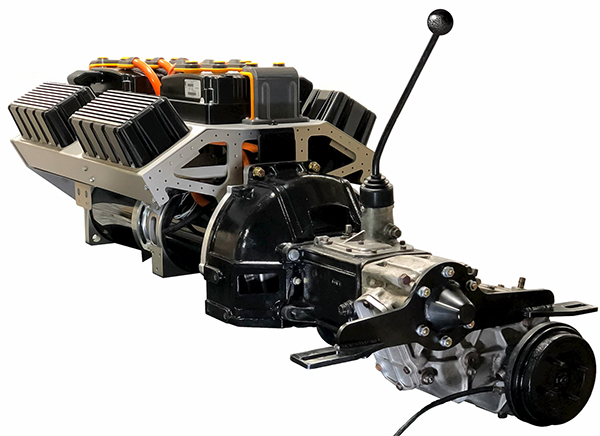
“There’s no uniform approach to conversions of classic cars,” says Hutchinson. “Aside from Zero Labs’ electric Bronco or Gateway Bronco, there’s no one taking a repeatable approach to producing OEM quality. And that’s our bulls-eye.”
Hutchinson says he started Electric GT sort of on a whim back in 2014 when he bought a well-used Ferrari 308 GTS. He got the idea to go electric because the original engine was not very powerful by today’s standards. Hutchinson learned a lot about EVs during that conversion, and the company has grown steadily since. Today, there are a couple of things happening that he says could be a huge market boost.
“There’s actually a huge market segment that’s kind of in the niche,” says Hutchinson. “It’s not mainstream Mopar, Coyote or LS, but it’s huge because people are starting up small car companies under 500 cars that want to go electric. And then there are companies such as Gateway with their classic Bronco. People love the classics but want something reliable. These guys aren’t usually making a 400-mile road trip in their Bronco anyway – it’s their weekend car.”
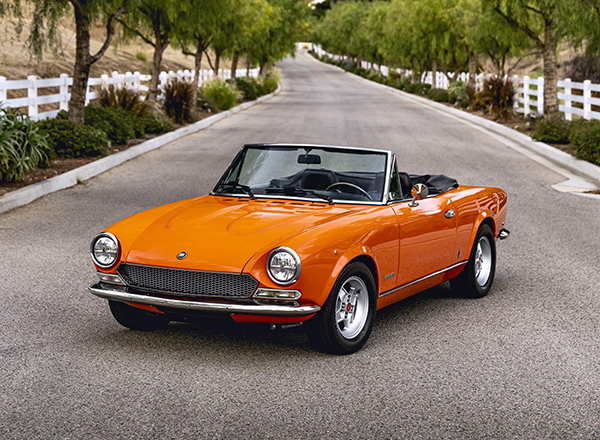
Hutchinson discovered there is a growing demographic that wants a classic vehicle and wants it electric to feel better about it all. And when you look at it, there is not much difference between a guy who wants a 600-700 hp LS package with all the bells and whistles. They may have the car, but it needs a complete restoration. Only they want it updated with modern technology – more resto-mod than restoration.
“When looking at a complete LS package, it’s not just the engine we’re talking about, it’s the entire ecosystem,” notes Hutchinson. “These customers are looking at $40,000-$45,000 plus or minus just for the engine in some cases. So when we talk about an EV swap, the cost is comparable once you add it all up.”
According to Hutchinson, Electric GT is focusing on business-to-business because they are not going to do the conversions themselves. “Anything that we’re doing in our shop right now is for R&D engineering. Our primary line will be essentially a V8, V6, and a four-cylinder turnkey replacement system that fits as many vehicles as possible. The first one out the gate is what we call the 413. It doesn’t even exist on the website yet.”

What they have on the website is called a 353, which is 353 foot-pounds of torque and 240 horsepower. Hutchinson says it feels like around 350 horsepower ICE equivalent. “You have to look at the torque numbers when you’re in talking ICE language.”
The numbers Hutchinson is referring to – 413, 313, and 213 – are the torque ratings of their electric motors. “These would be the equivalent – if you’re a gas guy – to that amount of horsepower. There’s more to it than that, but it’s good for bridging the gap without having to go into an in-depth explanation.”
The 413, according to Hutchinson, will be 406 foot-pounds of torque, and it’s going to feel similar like 400-425 horsepower. “One hundred percent of its torque is available at zero RPMs,” he remarks. “That’s why electric is fun! Instead of building up to 3,000 or 4,000 rpms, we’re running around 5,000 rpms all the time.”
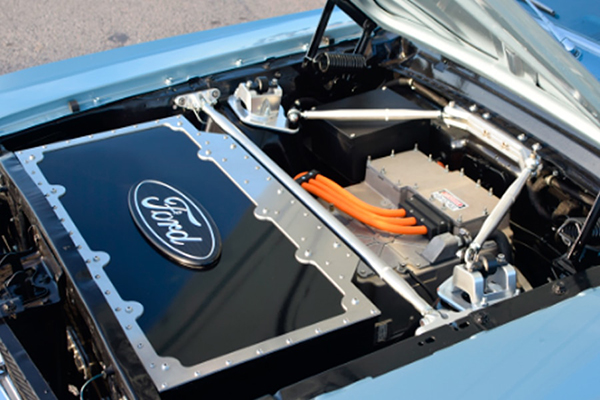
The 413 has a peak efficiency of around 3,700 or 4,000 rpm. But what makes it so different than anything else in the segment? It looks like an ICE engine block, only a little more modern. “We’re certainly trying to keep it analog looking as much as possible,” Hutchinson adds. “We have an air scoop intake on the one we’re coming out with and wires are coming out of the top. The idea was to make it look like an engine block. It bolts up to a manual transmission like a Tremec or something that can handle 500-ft.-lbs. of torque. And the motor block has 12 kilowatts of onboard charging built into it.”
According to Hutchinson, “It’s got a smart high voltage junction box that is the whole car’s nerve center, including the battery management system (BMS), which monitors and keeps a lid on your batteries. We have air conditioning as an option. Vintage Air worked with us to help integrate their control units into it. And, the 413 fits in the LS footprint.
Hutchinson says they bypassed the 353 because it was a lower voltage system that used Tesla S modules as the battery component. There’s too much wrong in the concept of providing used parts and a low voltage system. There’s not enough supply chain for the batteries. Then there’s a warranty issue that you have to give a warranty on used batteries, which we’re not going to do.”
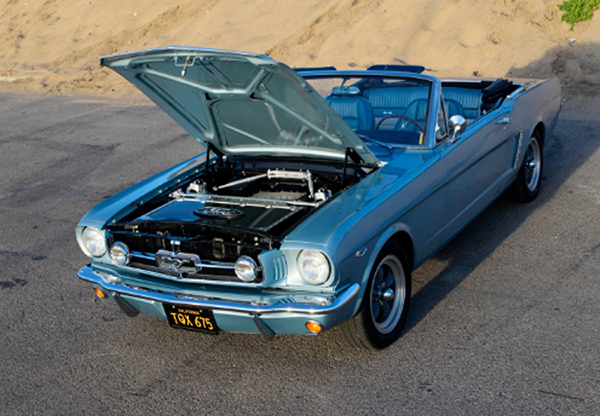
Because there were some inherent downsides to used batteries, Hutchinson says they have sourced their own batteries and plan to make an announcement about it in the near future. “We’re going to make Tier 1 batteries available, both energy and power modules. Then we’re using them in our systems. But the block itself has around 30 kilowatt-hours and weighs close to the 575 lbs. plus or minus of what the ICE small block Chevy is all built up. That way, the block bolts up to the transmission where the weight of the car was supposed to be.”
Hutchinson’s problem with other conversions, including some of their early projects, is that the weight distribution can be quite a bit off from what it was with the ICE. He says the 253 version used in their Land Cruiser build is very much like what they used in the Ferrari. It had 30-kilowatt-hours and was handbuilt.
“There’s nothing about it that is mass-producible,” he says. “And it doesn’t have the batteries in the motor block. So like their Fiat Spyder conversion, it is a little backend heavy. You have to re-spring it, and it doesn’t drive like the original. We like the weight up further.
“As we progressed over the last few years in our learning curve, we’ve come to the point where we put as much battery as we can into the block to maintain the weight distribution. This includes the inverter, the high-voltage junction box, the BMS system, your chargers, and your DCVC, which is the equivalent of your alternator all baked into a block.”
And what goes with that are additional battery enclosures, which are OEM connected, according to Hutchinson. He says any fabricator can bolt them in. “On the Bronco, for example, there are two saddlebags under the driver’s and passenger seat that bolt up to the frame, and they just have high voltage junction cables that plug in via connectors that are touch proof connectors.”

He says the plumbing lines plug in as well, so they don’t have to open up battery boxes. The new system will be rated at 540-volts and allows the air conditioner and all the OEM electronics to work. “That’s why we want the higher voltage. Plus, it’s more efficient.”
The whole system uses the standard J1772 plug (not Tesla’s plug), and there’s an adapter that plugs on to the car to use any destination charger. The 1772 is a level 2 charger, says Hutchinson. The VCU (central control unit) mates to the system and is smart controlled and uses all the CAN signals. He says they will also have DC fast charging in the future, from 50 to 200 kilowatts.
Hutchinson agrees that the big differentiator has been the battery technology improving so quickly. “When we had the LiPo batteries in the Ferrari, I think it was 28-kilowatt hours and weighed 680 lbs. We replaced them with LG Chem modules out of a Pacifica hybrid, which put out 42-kilowatt hours. And it was only 30 lbs. heavier. Then, we pulled those out and we’re putting 44-kilowatt hours back into it, but we’re saving about 15% of volume, and getting about 30% more capacity. We are lightening up the car, giving it more range and more power at the same time. It’s amazing. The technologies are incrementally getting there.
Hutchinson points out that they have an excellent BMS with thermal management, bringing the OEM state-of-the-art into the classic car world. “It will allow shops to offer a full three-year warranty or two years or whatever it is. And they can install the system with some fabrication and plug and play on the wiring. The programming is all through one central VCU. It’s pretty straight forward.”
What we like about the Electric GT “crate motor” is the installer can choose the components separately as they need. It’s not just Package A or Package B. You can buy the kind of package you want.
We realize that the thought of an electric crate motor seems somewhat antithetic to what you do now with engines. But installers and builders who are already working on classic vehicles may find a new niche of buyers in the coming years. EVs are estimated to make up 30 percent of the vehicle fleet within 10 years or less.
Hutchinson says that the younger generation wants a classic car, but they don’t really like the ICE engine that goes with it. “Even that whole generation, and the car culture that we grew up in the ‘60s and ‘70s, is tilting pretty quick and hard. I see EV conversions as a great way to keep that alive for generations to come.”
This article courtesy of Engine Builder.

